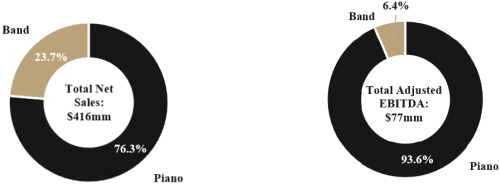Failure to comply with global anti-corruption laws, including the FCPA, and other laws such as sanctions and export controls associated with our activities outside of the United States could subject us to penalties and other adverse consequences.
We operate a global business and may have direct or indirect interactions with officials and employees of government agencies or state-owned or affiliated entities. We are subject to the U.S. Foreign Corrupt Practices Act of 1977 (as amended) (the “FCPA”), the U.S. domestic bribery statute contained in 18 U.S.C. § 201, the U.S. Travel Act, the USA PATRIOT Act, the U.K. Bribery Act 2010, and other anti-bribery and anti-money laundering laws in countries in which we conduct activities. These laws generally prohibit companies and their employees, officers and directors, as well as any third-party acting on their behalf from corruptly promising, authorizing, offering, or providing, directly or indirectly, improper payments or anything of value to foreign government officials, political parties, and private-sector recipients for the purpose of obtaining or retaining business, directing business to any person, or securing any advantage. In addition, U.S. public companies are required to maintain records that accurately and fairly represent their transactions and have an adequate system of internal accounting controls.
We implement certain anti-corruption compliance programs and policies, procedures and training designed to promote compliance with anti-corruption laws. However, we cannot provide assurance that our internal controls and compliance systems will always protect us from liability for acts committed by employees, agents or our employees, officers and directors, or any third parties acting on our behalf (including distributors), or any businesses that we subsequently acquire, business partners of ours (or of businesses we acquire or partner with) that would violate U.S. and/or non-U.S. laws, including the laws governing payments to government officials, bribery, fraud, kickbacks and other related laws. Any such improper actions or allegations of such acts could subject us to costly investigations and/or significant sanctions, including civil or criminal fines and penalties, disgorgement of profits, injunctions and debarment from government contracts, as well as related stockholder lawsuits and other remedial measures, all of which could adversely affect our reputation, business, financial condition and results of operations.
We face significant risks if we or any of our directors, officers, employees, agents or other partners or representatives fail to comply with these laws and governmental authorities in the United States and elsewhere could seek to impose substantial civil and/or criminal fines and penalties which could have a material adverse effect on our business, reputation, operating results and financial condition.
Further, we are subject to rules and regulations of the United States and other countries, as applicable, relating to export controls and economic sanctions, including, but not limited to, trade sanctions administered by the Office of Foreign Assets Control within the U.S. Department of the Treasury, as well as the Export Administration Regulations administered by the U.S. Department of Commerce. These regulations limit our ability to market, sell, distribute or otherwise transfer our products or technology to prohibited countries or persons. While we have taken steps to comply with these rules and regulations, a determination that we have failed to comply, whether knowingly or inadvertently, may result in substantial penalties, including fines, enforcement actions, civil and/or criminal sanctions, the disgorgement of profits, and may materially adversely affect our business, results of operations and financial condition.
Any violation of the FCPA, other applicable anti-corruption laws, anti-money laundering laws, or laws related to export controls and economic sanctions could result in whistleblower complaints, adverse media coverage, investigations, loss of export privileges, severe criminal or civil sanctions and, in the case of the FCPA, suspension or debarment from U.S. government contracts, any of which could have a materially adverse effect on our reputation, business, operating results and prospects. In
68


























